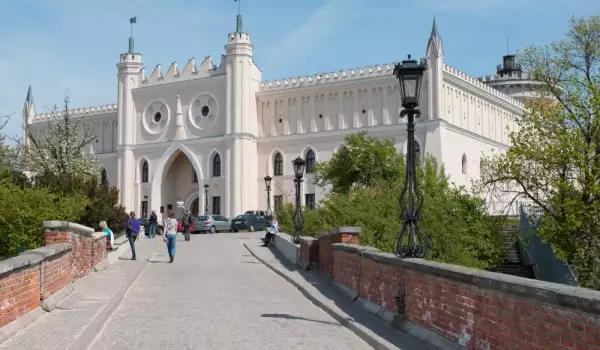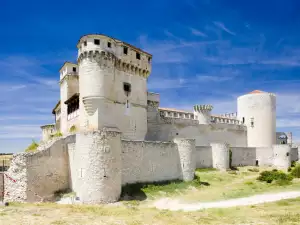Lublin Castle

Lublin Castle is the largest historic landmark on the eponymous Polish city, which is the largest in Eastern Poland and the ninth largest in the whole Republic. The castle has fully preserved its medieval atmosphere in its urban plan. The castle is beautiful and has a unique chapel Holy Trinity, which belongs to the castle. The castle rises near the old town and the central part of the Polish city.
Predecessor of the castle was a wooden fortress built on the local hill in the 12th century. The stone castle appeared in 13th century and the dates are on the stone tower, preserved to this day. This part of the castle is the highest part of the complex, and the oldest building in the entire town in Poland.

In 14th century under the walls of the Lublin Castle was built Holy Trinity church, which was the royal chapel in those years. Holy Trinity was built in the late 14th century by Polish King Casimir the Great (1330-1370).
Extremely curious fact is that the incredibly beautiful frescoes on the walls of the Holy Trinity Chapel in the castle are by Bulgarian and Russian painters. In essence, the drawings are fully Orthodox frescoes which have recently been restored in all its glory.
The Holy Trinity is a Catholic chapel, but was raised in Western, Gothic style and is painted on all the canons of Eastern Orthodoxy.
The frescoes in the chapel of the castle were the work of Bulgarian and Russian painters, two of whom have left their names on the walls of the church - Cyril and Yushko. The name of the chief master painter was Andrew, who carved itself a church-donor directly to the plate.
Slab also wrote that painting the interior walls of the chapel in the castle was finished on August 10, 1418 and that all the work was on the order of the Polish king Władysław II Jagiełło.
After 16th century Lublin Castle gradually declined, and the Holy Trinity Chapel served as a missionary home. For 20 years during the 19th century the castle was turned into a prison, and the chapel served the guards and prisoners.
At that time the murals were covered with plaster for over a century. In the postwar years of the Second World War the castle with its citadel and chapel went under major renovation and restoration work by the famous Polish school of restoration.















